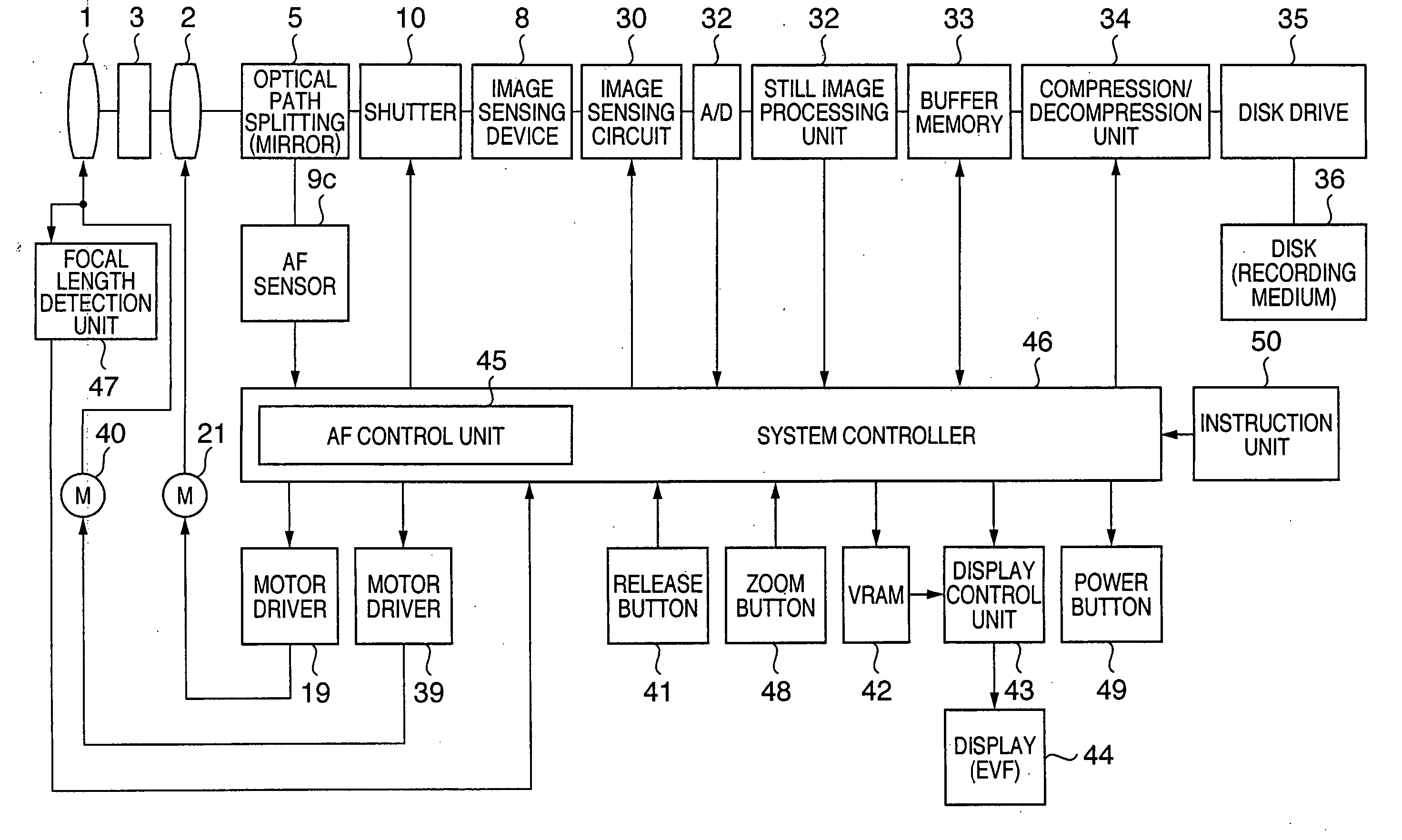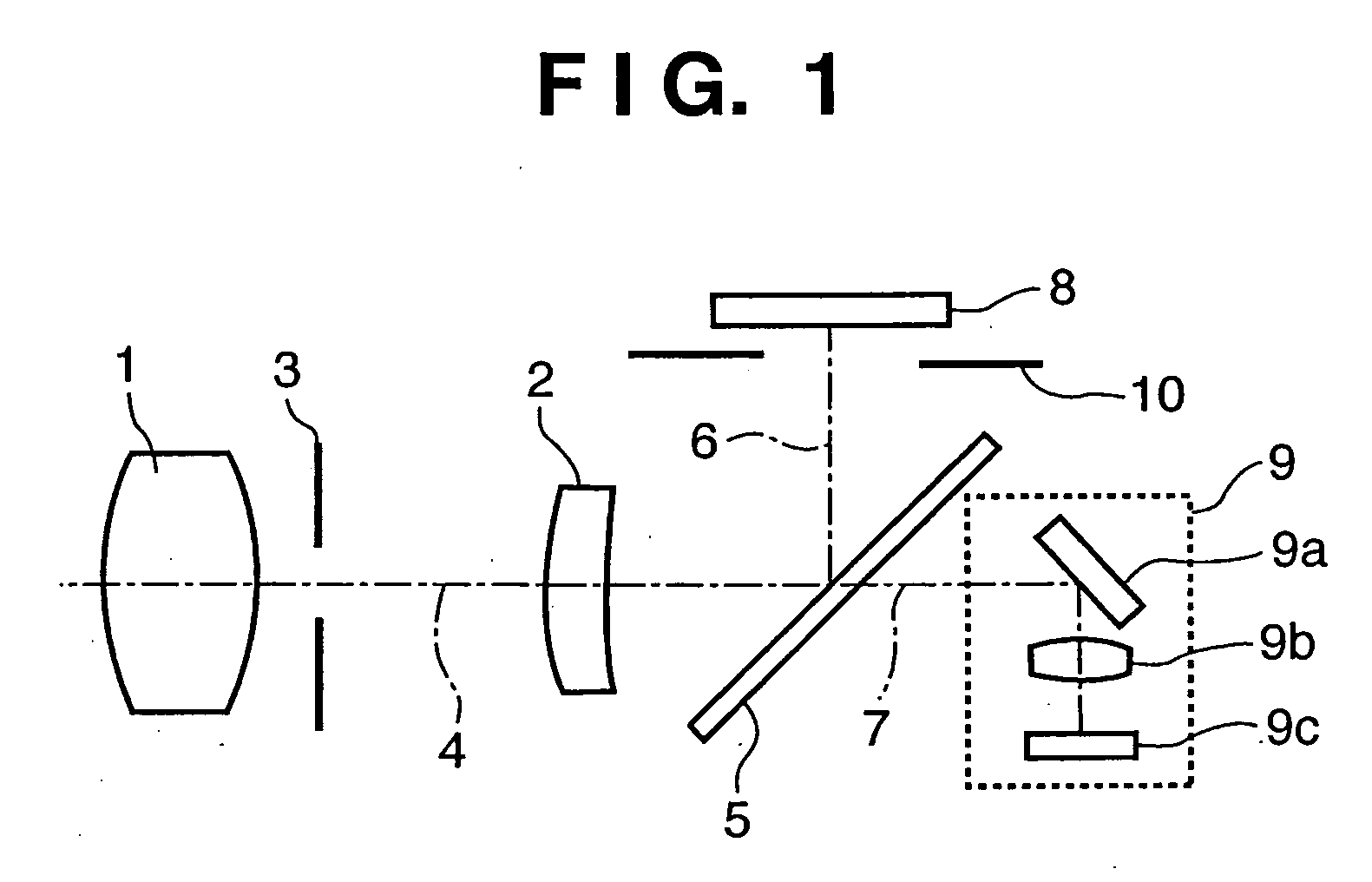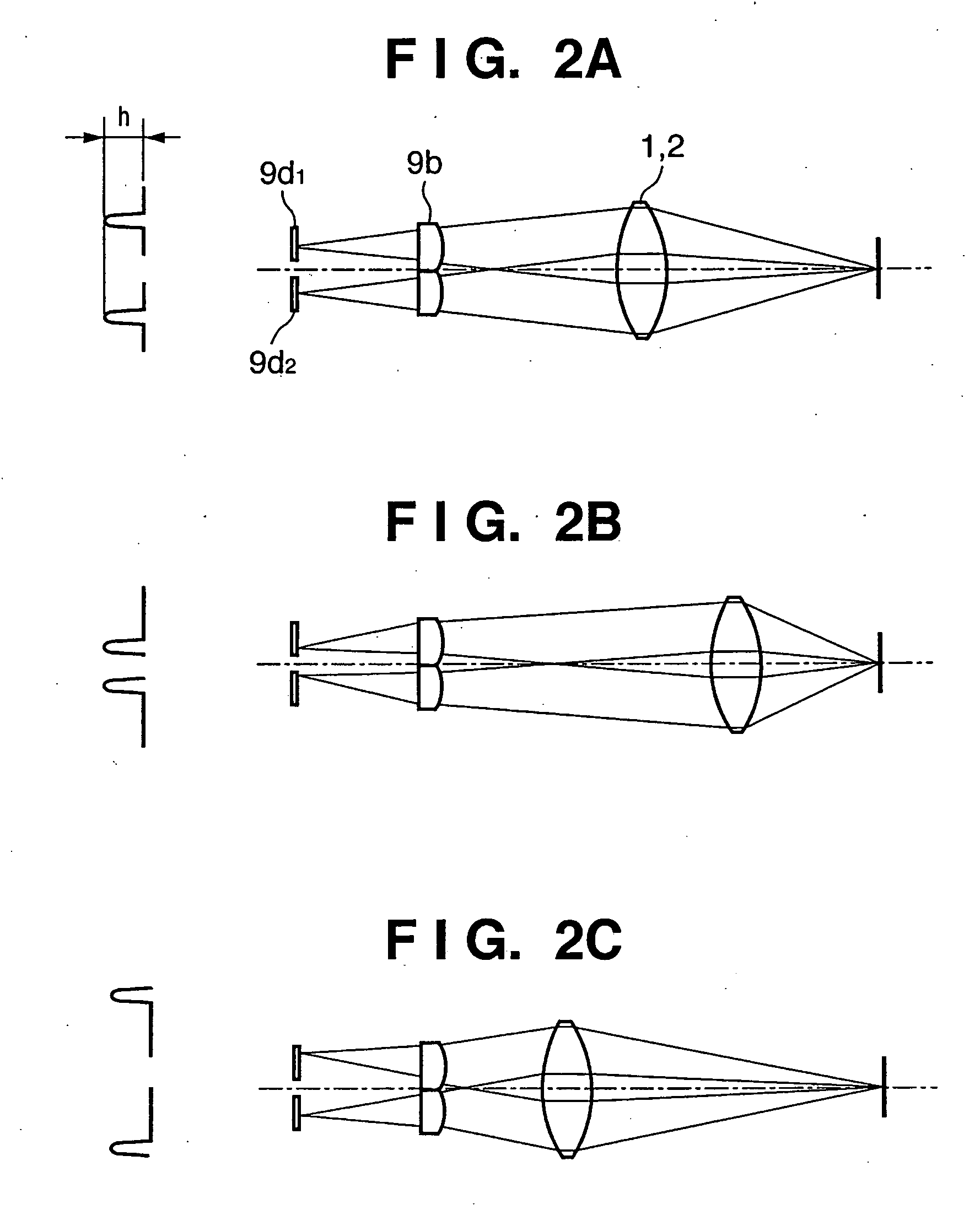Camera, control method therefor, program, and storage medium
a control method and camera technology, applied in the direction of exposure control, camera focusing arrangement, printers, etc., can solve the problems of difficult to know whether the defocus arises from a near-focus state or a far-focus state, and the contrast af focus detection is not suitable for a system, so as to increase the focusing speed and quickly focus the camera
- Summary
- Abstract
- Description
- Claims
- Application Information
AI Technical Summary
Benefits of technology
Problems solved by technology
Method used
Image
Examples
first embodiment
[0037]FIG. 1 is a view showing the configuration of an electronic camera according to the first embodiment of the present invention.
[0038] In FIG. 1, reference numerals 1 and 2 denote photographing lenses for photographing an object. Especially, the photographing lens 2 is a focus lens which is driven in focusing (focus adjustment). Reference numeral 3 denotes a stop which adjusts the light quantity of an object in accordance with the brightness of the object. Reference numeral 4 denotes a photographing optical axis of the photographing lens 1 and focus lens 2. Reference numeral 5 denotes an optical path splitting device which splits a light beam having passed through the photographing lens 1 and focus lens 2 into a photographing light beam and a light beam toward an AF (Auto Focus) system. The optical path splitting device 5 is a half-mirror according to the first embodiment. Reference numerals 6 and 7 denote a photographing optical axis and AF optical axis, respectively, serving ...
second embodiment
[0076] Only the difference of the second embodiment from the first embodiment will be explained.
[0077] In FIG. 12, the same step numerals denote the same operations as those of the first embodiment in FIG. 6, and a description thereof will be omitted.
[0078] In FIG. 12, step S105 is added between steps S2 and S3. In step S105, the camera user instructs in advance the camera on the position of a main object. The second embodiment adopts an instruction unit which allows the camera user to instruct in advance the camera on the position of a main object. That is, the camera user indicates an object with an instruction unit 50 while seeing the object on a display 44.
[0079] Steps S100 to S103 in FIG. 12 will be described. If the position of a main object does not fall within the phase difference AF area in step S8, a distance measurement point to be referred to must be determined, in order to refer to distance measurement information in phase difference AF near the position of the main ...
PUM
 Login to View More
Login to View More Abstract
Description
Claims
Application Information
 Login to View More
Login to View More - R&D
- Intellectual Property
- Life Sciences
- Materials
- Tech Scout
- Unparalleled Data Quality
- Higher Quality Content
- 60% Fewer Hallucinations
Browse by: Latest US Patents, China's latest patents, Technical Efficacy Thesaurus, Application Domain, Technology Topic, Popular Technical Reports.
© 2025 PatSnap. All rights reserved.Legal|Privacy policy|Modern Slavery Act Transparency Statement|Sitemap|About US| Contact US: help@patsnap.com



